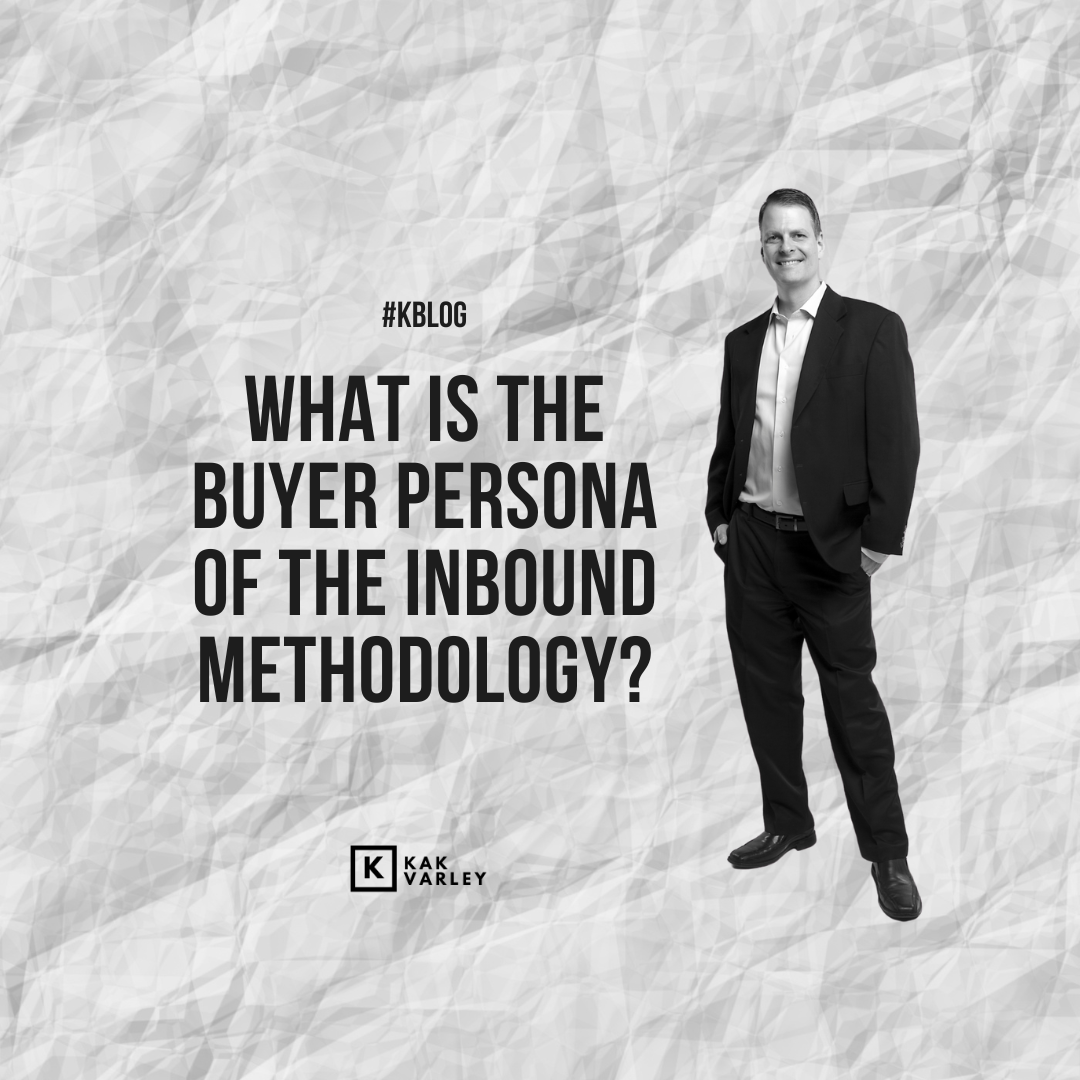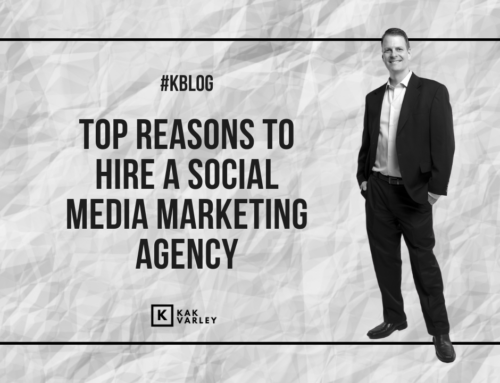
If you are looking to attract and convert potential customers through inbound marketing, you need to define your buyer persona. A buyer persona is a semi-fictional representation of your ideal customer. It includes information about their demographics, behavior patterns, motivations, and goals. By creating a buyer persona, you can tailor your inbound marketing strategy to meet the needs of your target audience.
The inbound methodology is a customer-centric approach to marketing that focuses on creating valuable content and experiences that attract, engage, and delight potential customers. It involves four stages: attract, convert, close, and delight. At each stage, you need to understand your buyer persona and provide them with the right content and experiences to move them through the buyer’s journey. By doing so, you can build trust, establish authority, and ultimately, generate more leads and revenue.
Understanding the Buyer Persona
To effectively use the inbound methodology, you need to understand your buyer persona. As mentioned, a buyer persona is a semi-fictional representation of your ideal customer based on market research and data about your existing customers. It helps you understand your customers’ needs, preferences, and behaviors so that you can create targeted content and messaging that resonates with them.
To create a buyer persona, you need to gather information about your customers, such as their demographics, job title, goals, challenges, and pain points. You can use surveys, interviews, and social media analytics to collect this information.
Once you have gathered the data, you can create a buyer persona profile that includes information such as the persona’s name, age, job title, goals, challenges, and pain points. You can also include information about their preferred communication channels, such as email, social media, or phone.
Having a clear understanding of your buyer persona can help you create content that speaks directly to their needs and interests. It can also help you target your marketing efforts more effectively, resulting in higher conversion rates and more loyal customers.
Bottom line, by creating a detailed profile of your ideal customer, you can create content and messaging that resonates with them, resulting in more effective marketing and higher customer satisfaction.
Inbound Methodology Overview
The inbound methodology is a marketing approach that is a customer-centric approach that aims to build trust and establish long-term relationships with customers. By providing valuable content and experiences tailored to their needs and interests you can maximize the outcomes of your inbound campaign.
The inbound methodology consists of four stages: attract, convert, close, and delight. Each stage represents a different step in the customer journey and requires a different set of tactics and tools to achieve success.
Attract
The first stage of the inbound methodology is “attract”. During this stage, you aim to attract potential customers to your website or social media channels by providing valuable content that addresses their pain points and interests. This content can take the form of blog posts, social media updates, videos, podcasts, and more.
To attract potential customers, you need to understand their buyer persona and create content that resonates with them. You can use tools like Google Analytics, social media insights, and customer surveys to gather data about your target audience and create content that speaks to their needs and interests.
Convert
The second stage of the inbound methodology is convert. During this stage, you aim to convert website visitors into leads by offering them something of value in exchange for their contact information. This could be a free e-book, whitepaper, webinar, or consultation.
To convert website visitors into leads, you need to create compelling calls-to-action (CTAs) and landing pages that clearly communicate the value of your offer and encourage visitors to take action. You can use A/B testing to optimize your CTAs and landing pages for maximum conversions.
Close
The third stage of the inbound methodology is close. During this stage, you aim to turn leads into customers by nurturing them with targeted content and personalized communication. This could include email campaigns, social media interactions, and personalized offers.
To close leads into customers, you need to have a clear understanding of their needs and pain points and provide them with solutions that meet their specific needs. You can use customer relationship management (CRM) software to track your leads and automate your communication to ensure that you are providing a personalized experience.
Delight
The fourth stage of the inbound methodology is delight. During this stage, you aim to turn customers into promoters by providing them with exceptional experiences and support. This could include loyalty programs, referral programs, and personalized support.
To delight customers, you need to go above and beyond their expectations and provide them with a memorable experience that they will want to share with others. You can use customer feedback and surveys to gather insights into what your customers value most and use this information to improve your products and services.
The Characteristics of the Buyer Persona in the Inbound Methodology
When it comes to the inbound methodology, understanding the buyer persona is key to creating effective marketing campaigns. In this section, we will discuss the key characteristics of the buyer persona in inbound methodology. These are the “keys” to the inbound marketing methodology.
Demographics
Demographics refer to the statistical data that describes a population. In inbound methodology, the demographics of your buyer persona are essential to understanding their needs and preferences. This includes information such as age, gender, location, education, income, and occupation. By understanding these demographics, you can tailor your marketing campaigns to better resonate with your target audience.
Psychographics
Psychographics refer to the personality traits, values, attitudes, interests, and lifestyles of your target audience. The Inbound methodology focuses on creating content that speaks to the needs and desires of your buyer persona. This means understanding their psychographics and creating content that aligns with their values and interests.
Behavior Patterns
Behavior patterns refer to the actions and behaviors of your buyer persona. This includes their buying habits, search behavior, and social media usage. By understanding these behavior patterns, you can create marketing campaigns that target your audience at the right time and on the right platform.
Motivations
Motivations refer to the underlying reasons why your buyer persona is interested in your product or service. This includes their pain points, goals, and aspirations. By understanding their motivations, you can create content that speaks to their needs and desires.
Goals
Goals refer to the specific objectives that your buyer persona is trying to achieve. This includes both personal and professional goals. By understanding their goals, you can create marketing campaigns that show how your product or service can help them achieve their objectives.
Challenges
Challenges refer to the obstacles that your buyer persona is facing in achieving their goals. By understanding their challenges, you can create content that addresses their pain points and offers solutions to their problems.
Therefore, understanding the buyer persona is essential to creating effective marketing campaigns in inbound methodology. By understanding their demographics, psychographics, behavior patterns, motivations, goals, and challenges, you can create content that resonates with your target audience and drives conversions.
Role of Buyer Personas in Inbound Marketing
The role of buyer personas in inbound marketing is to provide an essential understanding of your target audience. You can use this to your advantage because it helps you to understand your customers’ needs, preferences, and behaviors, which in turn enables you to create content that resonates with them.
Here are some of the ways in which it helps:
Personalization
One of the core principles of inbound marketing is personalization. By understanding your buyer persona, you can tailor your content to their specific needs and interests. This not only makes your content more engaging but also increases the chances of conversion.
Content Creation
Creating content that resonates with your target audience is essential to the inbound methodology. By knowing your buyer persona, you can create content that addresses their pain points, challenges, and goals. This helps to establish your brand as a thought leader and builds trust with your audience.
Lead Nurturing
The buyer persona also plays a crucial role in lead nurturing. By understanding your target audience, you can create targeted campaigns that move them through the buyer’s journey. This helps to keep your brand top of mind and increases the chances of conversion.
In other words, the buyer persona is a critical component of the inbound methodology. By understanding your target audience, you can create personalized content that resonates with them, establish your brand as a thought leader, and increase the chances of conversion.
Building a Buyer Persona for Inbound Methodology
To effectively implement the inbound methodology, you need to have a clear understanding of your target audience. Building a buyer persona is an essential step in this process. This is how you effectively build a buyer persona.
Research
The first step in building a buyer persona is research. You need to gather data on your target audience, including their demographics, interests, pain points, and buying behavior. You can use various tools and resources to conduct your research, such as Google Analytics, social media analytics, and market research reports.
Interviews
Once you have gathered initial data, you can conduct interviews with your existing customers to gain deeper insights into their needs and preferences. You can ask questions about their goals, challenges, and decision-making processes. These interviews can be conducted in person, over the phone, or via email.
Surveys
Surveys are another effective way to gather data on your target audience. You can create surveys using tools like SurveyMonkey or Google Forms and send them to your email list or social media followers. Surveys can help you gather quantitative data on your customers’ preferences, behavior, and pain points.
Analysis
After gathering data from research, interviews, and surveys, you need to analyze the data to identify patterns and trends. You can use tools like Excel or Google Sheets to organize and analyze your data. This analysis will help you identify common characteristics and behaviors among your target audience, enabling you to create more effective buyer personas.
Remember to keep your buyer persona updated as your business and market evolve to ensure that your content remains relevant and effective.
Implementing Buyer Persona in Inbound Methodology
When implementing buyer persona in inbound methodology, it is essential to keep in mind that the goal is to provide value to your target audience. By creating content that resonates with your buyer persona, you can attract the right visitors to your website and convert them into leads.
Content Creation
To create content that appeals to your buyer persona, you must understand the buyer, then develop and implement a content strategy for them. Use this information to create content that addresses their specific needs and interests.
Consider using the following types of content:
- Blog posts
- Ebooks
- Whitepapers
- Case studies
- Videos
- Infographics
When creating content, use language and tone that resonates with your buyer persona. Use the language they use to describe their challenges and goals. Also, ensure that your content is visually appealing and easy to read.
SEO Strategy
To attract your target audience to your website, you must optimize your content for search engines. Use keywords that your buyer persona is likely to search for. You can use tools such as SEMRush in order to check what your buyers are searching for. Also, ensure that your website is mobile-friendly and loads quickly.
Social Media Strategy
Social media is an excellent way to reach your target audience and promote your content. Use social media platforms that your buyer persona is likely to use. Also, share content that is relevant and valuable to your audience.
Email Marketing
Email marketing is a powerful way to nurture leads and turn them into customers. Use email campaigns to provide your buyer persona with valuable information on your products or services as well as offers. Also, personalize your emails to make them more relevant to your audience.
By implementing a buyer persona in inbound methodology, you can attract the right visitors to your website and convert them into leads. Use the tips above to create content, optimize for search engines, use social media, and email marketing to reach your target audience.
Evaluating and Updating Your Buyer Persona
Once you have created your buyer persona, it’s important to keep it up to date. As your business grows and changes, your target audience may shift or evolve.
Here are some tips for evaluating and updating your buyer persona:
- Gather feedback from your customers: Reach out to your existing customers and ask for their feedback on your product or service. This can help you identify common pain points and challenges that your target audience faces.
- Review your website analytics: Look at your website analytics to see which pages are the most popular and which keywords are driving traffic to your site. This can give you insight into what your target audience is searching for and what topics are most relevant to them.
- Monitor social media: Keep an eye on social media to see what your target audience is talking about and what trends are emerging in your industry.
- Use surveys and questionnaires: Conduct surveys and questionnaires to gather more detailed information about your target audience. This can help you identify their needs, preferences, and behaviors.
- Update your buyer persona regularly: Make sure to review and update your buyer persona on a regular basis. This can help you stay on top of changes in your target audience and ensure that your marketing efforts are still relevant and effective.
By evaluating and updating your buyer persona regularly, you can ensure that your marketing efforts are targeted and effective. With a clear understanding of your target audience, you can create content and campaigns that resonate with them and drive results for your business.
Conclusion
Well, there you have it. We hope you now understand what the inbound methodology is and how buyer personas impact and influence the inbound methodology. If you need any help or assistance, Kak Varley Marketing provides digital marketing agency services to their clients. Of which, inbound marketing is a key focus.
Frequently Asked Questions
How Do You Create Effective Buyer Personas for Inbound Marketing?
To create effective buyer personas for inbound marketing, you need to conduct thorough research on your target audience. You can use customer surveys, interviews, and online analytics to gather data on your potential customers. Once you have collected enough data, you can then create a detailed profile of your ideal customer, including their demographics, behavior patterns, and pain points.
What Are the Different Types of Buyer Personas?
There are different types of buyer personas, including primary personas, negative personas, and secondary personas. Primary personas are your ideal customers, while negative personas are the ones you don’t want to target. Secondary personas are those who may not be your primary target but are still important to your business.
Why Are Buyer Personas Important for Inbound Marketing?
Buyer personas are important for inbound marketing because they help you understand your target audience and create content that resonates with them. By understanding your ideal customer’s needs, pain points, and behavior patterns, you can create targeted content that attracts and converts them into customers.
What Tools Are Available for Generating Buyer Personas?
There are several tools available for generating buyer personas, including HubSpot’s Make My Persona tool, Xtensio, and Geeksight. These tools can help you create detailed profiles of your ideal customer, including their demographics, behavior patterns, and pain points.
How Does HubSpot Incorporate Buyer Personas into Their Inbound Methodology?
HubSpot incorporates buyer personas into their inbound methodology by creating targeted content that resonates with their ideal customer. They use their Make My Persona tool to create detailed profiles of their ideal customer, and then create content that addresses their pain points and needs.
Can you Provide an Example of a Successful Buyer Persona Used in Digital Marketing?
Sure, a successful buyer persona used in digital marketing is the “Busy Business Owner.” This persona is typically a small business owner who is always on the go and has a limited budget. They are looking for cost-effective solutions that can help them save time and money. By understanding this persona’s needs and pain points, businesses can create targeted content that resonates with them and converts them into customers.
#kakvarley #kakapproved #ktip #kblog



